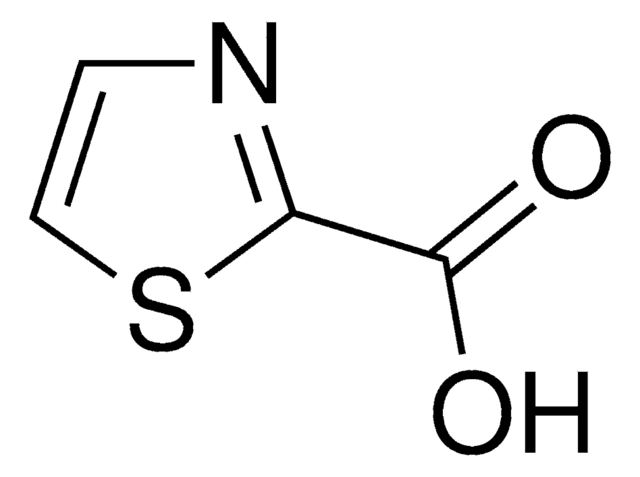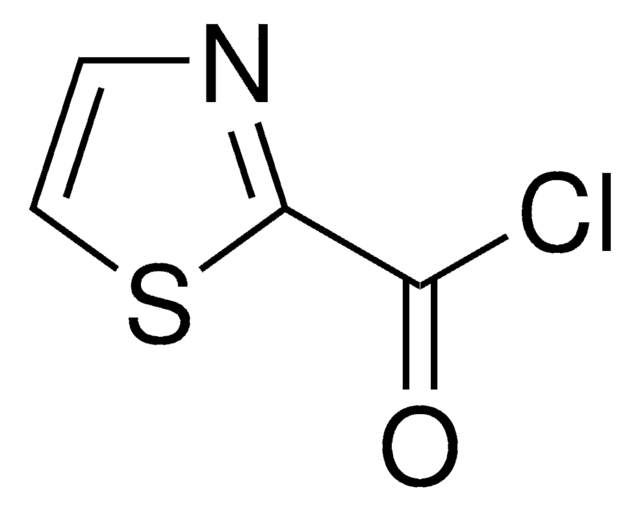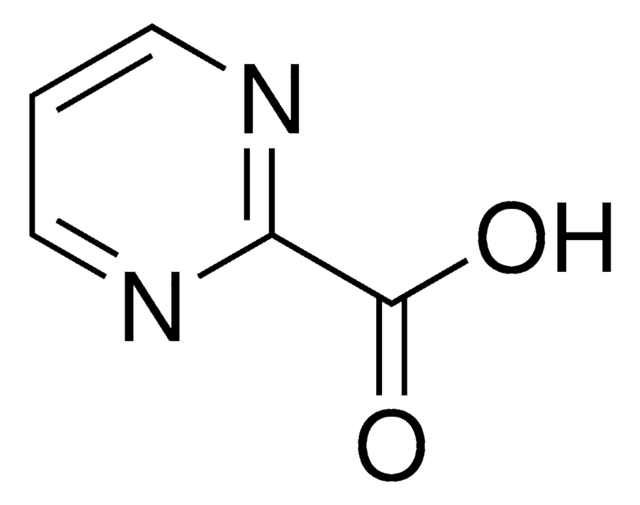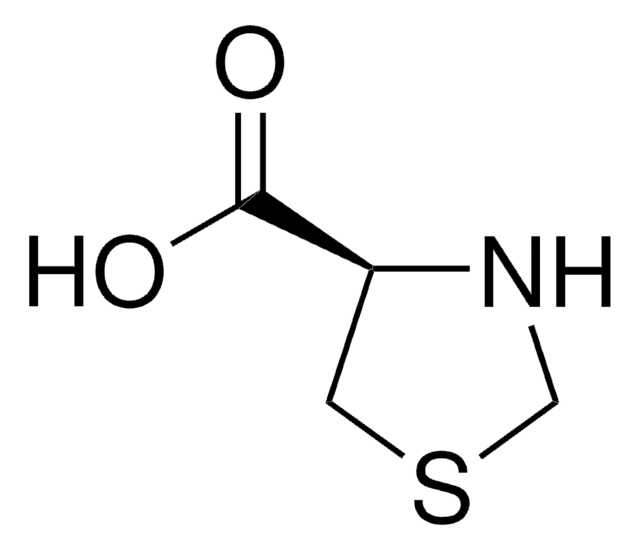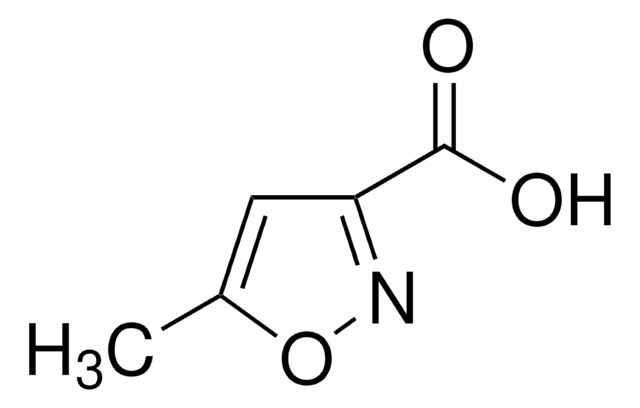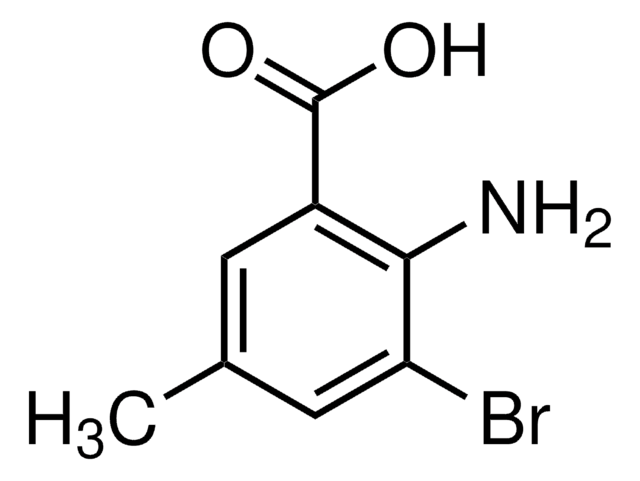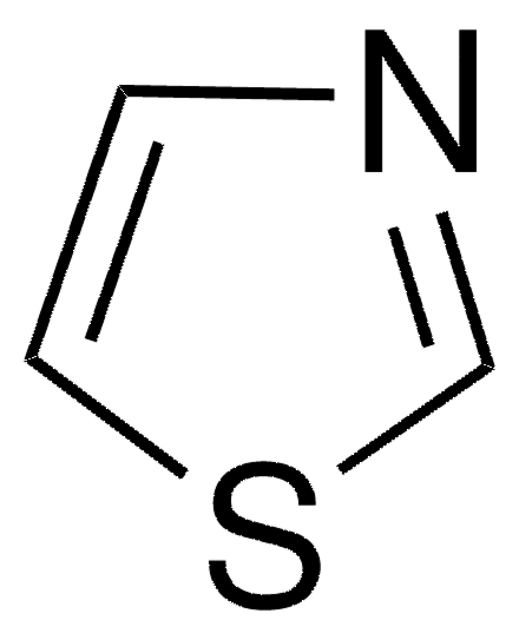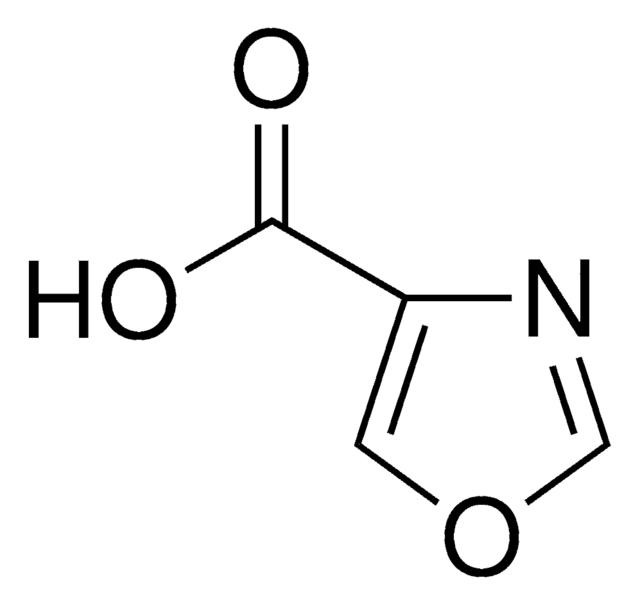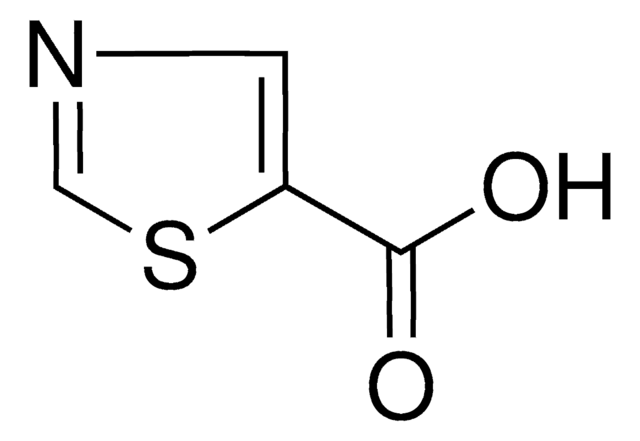633658
4-Thiazolecarboxylic acid
97%
Se connecterpour consulter vos tarifs contractuels et ceux de votre entreprise/organisme
About This Item
Formule empirique (notation de Hill) :
C4H3NO2S
Numéro CAS:
Poids moléculaire :
129.14
Numéro MDL:
Code UNSPSC :
12352100
ID de substance PubChem :
Nomenclature NACRES :
NA.22
Produits recommandés
Niveau de qualité
Essai
97%
Forme
solid
Pf
195-199 °C (lit.)
Groupe fonctionnel
carboxylic acid
Chaîne SMILES
OC(=O)c1cscn1
InChI
1S/C4H3NO2S/c6-4(7)3-1-8-2-5-3/h1-2H,(H,6,7)
Clé InChI
HMVYYTRDXNKRBQ-UHFFFAOYSA-N
Catégories apparentées
Mention d'avertissement
Warning
Mentions de danger
Conseils de prudence
Classification des risques
Skin Sens. 1
Code de la classe de stockage
11 - Combustible Solids
Classe de danger pour l'eau (WGK)
WGK 3
Point d'éclair (°F)
Not applicable
Point d'éclair (°C)
Not applicable
Équipement de protection individuelle
dust mask type N95 (US), Eyeshields, Faceshields, Gloves
Faites votre choix parmi les versions les plus récentes :
Déjà en possession de ce produit ?
Retrouvez la documentation relative aux produits que vous avez récemment achetés dans la Bibliothèque de documents.
Chloe Dubreil et al.
Small (Weinheim an der Bergstrasse, Germany), 14(40), e1802053-e1802053 (2018-09-06)
Nanoparticle (NP) administration is among the most attractive approaches to exploit the synergy of different copackaged molecules for the same target. In this work, iron oxide NPs are surface-engineered for the copackaging of the autoantigen proinsulin, a major target of
Angela Rico de Souza et al.
Toxicological sciences : an official journal of the Society of Toxicology, 140(1), 204-223 (2014-04-23)
Cigarette smoke is associated with chronic and enhanced pulmonary inflammation characterized by increased cytokine production and leukocyte recruitment to the lung. Although the aryl hydrocarbon receptor (AhR) is well-known to mediate toxic effects of manmade environmental contaminants, the AhR has
Hideo Satsu et al.
Cytotechnology, 67(4), 621-632 (2014-03-29)
The aryl hydrocarbon receptor (AHR) is a ligand-dependent transcription factor. It heterodimerizes with aryl hydrocarbon nuclear translocator, binds to the xenobiotic-responsive element (XRE), and enhances the transcription of genes encoding xenobiotic metabolizing enzymes. AHR also plays important roles in the
Notre équipe de scientifiques dispose d'une expérience dans tous les secteurs de la recherche, notamment en sciences de la vie, science des matériaux, synthèse chimique, chromatographie, analyse et dans de nombreux autres domaines..
Contacter notre Service technique